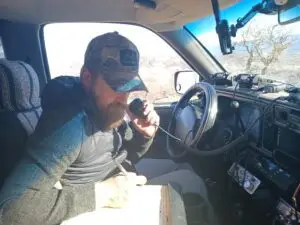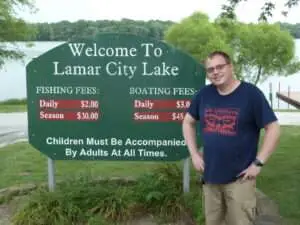Amateur radio is a hobby full of various exciting activities, and one of the fastest-growing programs in recent years is Parks On The Air (POTA). Whether you’re a seasoned operator or a newcomer to the hobby, POTA provides an exciting way to combine amateur radio with the great outdoors. Let’s take a closer look at how this program works, and why it’s attracting such interest among hams around the world.
What is POTA?
Parks On The Air is a program designed to promote the use of amateur radio in national, state, and provincial parks. It offers amateur radio operators (known as activators in the program) the opportunity to set up their stations in designated parks and make contacts (QSOs) with other hams. POTA not only fosters radio communications, but also encourages an appreciation of nature and outdoor activity.
Launched in 2017, POTA quickly gained popularity because it blends the enjoyment of radio with the adventure of exploring parks. The goal is simple: activators visit parks, set up their stations, and start making contacts, while those operating from home (known as hunters) try to make contact with as many activators as possible.
 How Does POTA Work?
How Does POTA Work?
Participating in POTA is straightforward. Here’s a breakdown of the basic process:
- Sign up on the POTA Website: To get started, operators can register for free on the official POTA website (www.parksontheair.com). From there, users can access information about activated parks, operator guidelines, and reporting procedures.
- Choose a Park to Activate: POTA covers thousands of parks across the globe, each with a unique identifier. Before heading out, activators can check which parks are available in their area. They can also plan trips to distant parks for added excitement.
- Activate the Park: Once in the park, operators set up their portable station. Many use lightweight antennas, battery-powered radios, and solar chargers to operate in remote areas. The goal is to make a minimum of 10 contacts to “activate” the park officially.
- Make QSOs: Activators use various modes such as CW (Morse code), SSB (Single Sideband voice), or digital modes (e.g., FT8) to make contacts. These contacts are often short exchanges of signal reports, locations, and park identifiers.
- Log and Submit Contacts: After making the required contacts, activators log their QSOs and submit them to the POTA website, where they are credited for the activation. Hunters also submit their logs to get credit for contacting activators.
- Earn Awards and Recognition: Both activators and hunters can earn awards based on the number of parks activated or contacted. These awards range from certificates for contacting a specific number of parks to special recognition for rare or difficult-to-reach locations.
Benefits of POTA
Parks On The Air offers a range of benefits to amateur radio enthusiasts:
- Promotes Outdoor Activity: For operators who love the outdoors, POTA encourages them to explore new parks, camp, hike, and enjoy the natural environment.
- Portable Operating Skills: POTA emphasizes portable radio operation, teaching hams to set up efficient, low-power stations in field conditions. This skill is invaluable for emergency communications.
- Global Community: POTA has a worldwide following, allowing hams from different countries to connect. The community aspect encourages camaraderie and networking among operators.
- Awards and Challenges: The program provides a fun and competitive environment through its awards and challenges, motivating operators to activate more parks or hunt for rare ones.
 Final Thoughts
Final Thoughts
Parks On The Air combines the thrill of amateur radio with outdoor adventure, creating a unique and rewarding experience for activators and hunters alike. Whether you’re contacting operators across the world from a remote mountaintop or reaching out to your fellow hams from your home station, POTA has something for everyone.
If you’re looking for a fresh way to enjoy ham radio while exploring nature, give POTA a try. You’ll find yourself not only making great contacts but also discovering new parks, learning new skills, and enjoying the great outdoors in a way that only amateur radio can offer.
Ready to activate your next park? Visit Parks On The Air to learn more and get involved! Got questions? Our very own John, KF0BQL, is an active and successful POTA participant. A quick QSO with John will render a treasure trove of hints, tips, and tricks as well as how to get started.
Additional Information
The Parks on the Air® Book – A POTA Book for Park Activators and Hunters
What is POTA? Parks On The Air Ham Radio (youtube.com)
Parks on the Air (POTA) Crash Course – HAM Radio for Non-Techies


